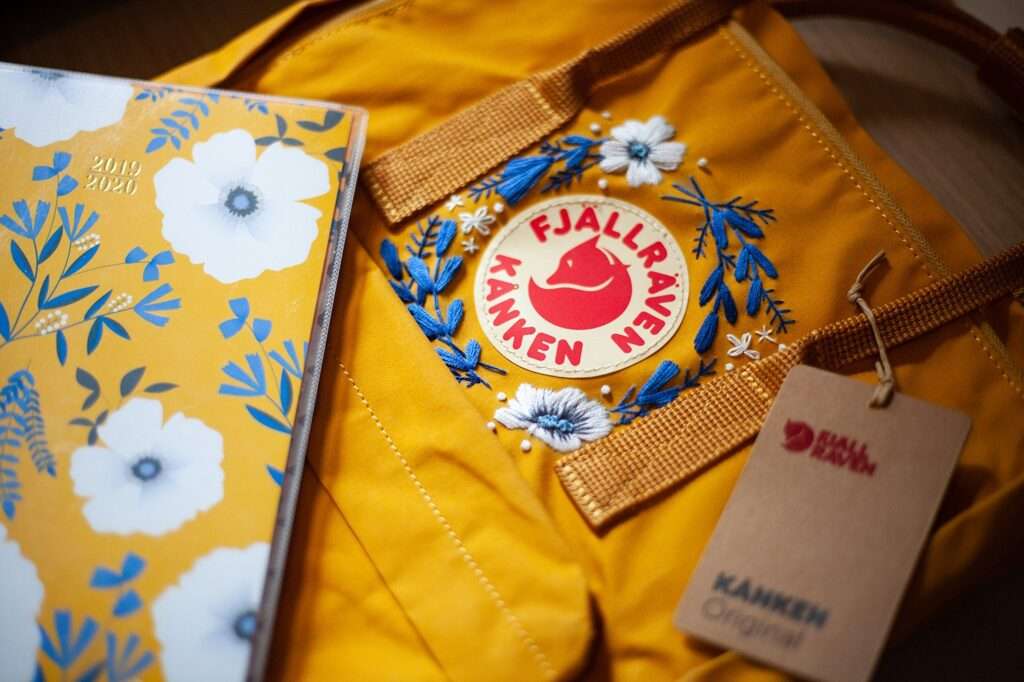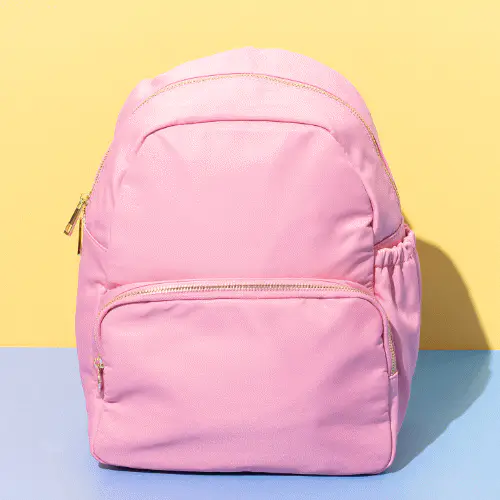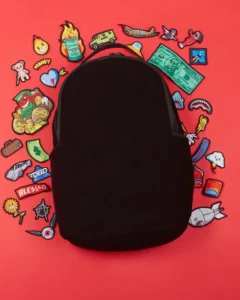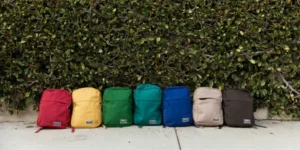Art of Custom Embroidery on Backpack
In today’s world of mass production and generic designs, standing out from the crowd has become a coveted pursuit. One way to add a unique and personal touch to your belongings is through the art of custom embroidery on backpack. From clothing to accessories, custom embroidery allows individuals to express their creativity and individuality. In this blog post, we will explore the art of custom embroidery on backpack specifically in the context of backpacks. Discover how this age-old craft can transform a plain backpack into a true reflection of your personality, passions, and style.
1. A Brief History of Embroidery:
The history of embroidery is extensive and goes back thousands of years. From ancient civilizations to contemporary cultures, it has served as a form of artistic expression and storytelling. Explore the origins of embroidery and how it has evolved over time, leading us to the modern practice of custom embroidery.
2. The Benefits of Custom Embroidery on Backpacks:

Custom embroidery on backpack offers a multitude of benefits when applied to backpacks. Discuss the advantages of personalization, including the ability to easily identify your bag, make a fashion statement, and showcase your interests. Highlight how custom embroidery can turn an ordinary backpack into a cherished item with sentimental value.
3. Choosing the Right Backpack for Embroidery:
Not all backpacks are created equal when it comes to embroidery. Guide readers through the process of selecting the ideal backpack for customization. Consider factors such as fabric type, stitching durability, and design suitability. Discuss different backpack styles and their compatibility with various embroidery techniques.
4. Creative Inspiration: Embroidery on Backpack Design Ideas:
One of the most exciting aspects of custom embroidery on Backpack is the freedom to create unique designs. Provide readers with a plethora of inspiration for their backpack embroidery projects. Explore different themes such as nature, pop culture, sports, and typography. Showcase examples of intricate and bold designs to spark creativity and provide a starting point for readers’ own ideas.
5. Getting Started: Embroidery Techniques and Tools:
Embarking on an embroidery project requires some basic knowledge of techniques and tools. Explain various embroidery methods, including hand embroidery, machine embroidery, and appliqué. Provide step-by-step instructions for each technique, along with a list of essential tools and materials needed to get started.
6. DIY vs. Professional Services: Pros and Cons:

Custom embroidery on Backpack can be a DIY project or outsourced to professional embroidery services. Compare the benefits and drawbacks of each strategy. Discuss factors such as skill level required, cost considerations, time investment, and the level of customization achievable. Assist readers in making a choice based on their unique needs and interests.
7. Caring for Embroidered Backpacks:
Embroidery on Backpack require special care to ensure their longevity. Provide practical tips on cleaning, storing, and maintaining embroidered designs. Discuss the importance of gentle washing techniques, avoiding harsh chemicals, and protecting the embroidery from excessive wear and tear. Help readers preserve the beauty of their customized backpacks for years to come.
8. Showcasing Your Custom Embroidery: Style Tips:
Once your backpack is adorned with custom embroidery, it’s time to showcase it with style. Offer readers fashion tips on how to incorporate their personalized backpacks into their everyday outfits. Discuss different occasions and settings where an embroidered backpack can make a statement. Encourage readers to embrace their unique creation and confidently express themselves.
When choosing the right embroidery on backpack, there are several factors to consider. You can use the following advice to make an informed choice:
1. Fabric Type and Quality:
Opt for backpacks made from high-quality fabrics that are suitable for embroidery. Fabrics such as canvas, denim, or twill tend to work well because they offer a sturdy base for embroidery stitches. Avoid backpacks made from thin or stretchy materials, as they may not hold the embroidery securely or may distort the design.
2. Smooth Surface:
Look for backpacks with a smooth and even surface. Embroidery requires a stable foundation, so avoid backpacks with excessive texture or unevenness. A smooth surface allows the embroidery stitches to be neat and well-defined.
3. Stitching Durability:
Consider the quality of the backpack’s stitching. Ensure that the seams and overall construction are strong and durable. The backpack should be able to withstand the embroidery process without the risk of unraveling or coming apart.
4. Design Compatibility:
Think about the design you have in mind for the embroidery. Consider the shape and size of the backpack and how well it complements your intended design. Some backpacks may have pockets, zippers, or other features that could affect the placement or visibility of the embroidery.
5. Color and Contrast:
Choose a backpack color that complements the colors of your embroidery thread. Consider the contrast between the backpack color and the thread color to ensure that the embroidered design stands out and is visually appealing.
6. Size and Functionality:
Take into account the size of the backpack and its intended purpose. If you plan to use the backpack for everyday activities or travel, ensure that it has sufficient storage capacity and compartments to accommodate your needs. The size should also be suitable for the embroidery design you have in mind, allowing enough space for the desired artwork.
7. Personal Style:
Consider your personal style and preferences. The embroidery on backpack should reflect your taste and align with your overall aesthetic. Choose a backpack that you genuinely like and feel excited about embroidering, as this will enhance your commitment and enjoyment throughout the customization process.
By considering these tips, you can select a backpack that serves as an excellent canvas for your embroidery artwork, ensuring a successful and satisfying customization project.
There are several popular backpack brands known for offering high-quality fabrics that work well for embroidery. Here are some notable brands to consider:

- JanSport: JanSport backpacks are renowned for their durability and functionality. They often use sturdy fabrics like canvas or polyester, which provide a suitable base for embroidery. Their classic designs and solid construction make them a popular choice for customization.

- Herschel Supply Co.: Herschel backpacks are known for their stylish designs and attention to detail. They offer a range of backpacks made from durable materials such as canvas or nylon, which are well-suited for embroidery. Herschel backpacks often feature a smooth surface, making them ideal for showcasing intricate embroidery designs.

- Fjällräven: Fjällräven backpacks are recognized for their exceptional quality and outdoor performance. Made from durable materials like G-1000 fabric, a blend of polyester and cotton, these backpacks are known to withstand rugged conditions. The fabric’s tight weave provides a stable base for embroidery.
- Patagonia: Patagonia is a renowned brand for outdoor gear, including backpacks. They prioritize sustainable materials and offer backpacks made from durable fabrics like recycled polyester. These backpacks are designed to handle outdoor adventures while providing a suitable canvas for embroidery customization.

- Eastpak: Eastpak is known for its functional and stylish backpacks. They offer a variety of designs made from durable materials such as polyester or nylon. These fabrics provide a smooth surface for embroidery and ensure longevity.
- Timbuk2: Timbuk2 specializes in high-quality backpacks designed for urban commuting and outdoor adventures. Their backpacks are often constructed from durable materials like Cordura nylon or canvas, making them suitable for embroidery. Timbuk2 backpacks are known for their ruggedness and reliability.
- Osprey: Osprey is a reputable brand in the outdoor industry, offering backpacks designed for hiking, trekking, and travel. Their backpacks are made from durable nylon fabrics with reinforced stitching, ensuring longevity and stability for embroidery customization.
When selecting a backpack brand for embroidery, it’s important to explore the specific models and features offered by each brand. Consider factors like fabric type, construction quality, and design compatibility to find a backpack that suits your embroidery needs and personal style.
Conclusion:
Custom embroidery on backpack elevates the humble backpack to a whole new level of personalization and self-expression. From choosing the right backpack to mastering embroidery techniques, this blog post has explored the art of custom embroidery in detail. Armed with this knowledge, readers can now embark on their own embroidery journey, transforming their backpacks into wearable works of art that reflect their individuality and style. Embrace the art of custom embroidery and let your backpack tell your story to the world.
FAQ’s
Q1: What is custom embroidery?
A1: Custom embroidery is the process of adding decorative designs, patterns, or text onto fabric using needle and thread. It allows individuals to personalize their belongings, such as backpacks, by adding unique and meaningful artwork.
Q2: Can any backpack be embroidered?
A2: While most backpacks can be embroidered, it’s important to choose a backpack with a suitable fabric and smooth surface for optimal results. Fabrics like canvas, denim, or twill tend to work well for embroidery, while thin or stretchy materials may not hold the embroidery securely.
Q3: How long does it take to embroider a backpack?
A3: The time it takes to embroider a backpack depends on various factors, including the complexity of the design, the size of the backpack, and the embroidery technique used. Simple designs may take a few hours, while more intricate or large-scale designs can take several sessions or days to complete.
Q4: Can I embroider my backpack by hand, or do I need a machine?
A4: Both hand embroidery and machine embroidery are viable options for customizing backpacks. Hand embroidery allows for more intricate and artistic details, but it requires manual stitching skills. Machine embroidery offers faster and more precise results, especially for larger designs or text.
Q5: How do I care for an embroidered backpack?
A5: To care for an embroidered backpack, it’s recommended to hand wash it or use a gentle cycle on a washing machine. Avoid using harsh chemicals or abrasive scrubbing. If possible, turn the backpack inside out before washing to protect the embroidery. Allow it to air dry, and avoid excessive ironing or direct heat.
Q6: Can I remove or change the embroidery design on my backpack?
A6: Once embroidery is applied to a backpack, it can be challenging to remove or change the design without leaving visible marks. It’s important to carefully plan and choose a design that you’ll be happy with in the long run. If you’re unsure, consider consulting with an embroidery professional before proceeding.
Q7: Can I embroider on a backpack with multiple pockets or zippers?
A7: Embroidering on backpacks with multiple pockets or zippers can be more challenging, as these features may obstruct the embroidery process or affect the design placement. It’s advisable to carefully plan the design to work around these elements or choose a backpack with a more suitable surface for embroidery.
Q8: Can I customize my backpack with different embroidery techniques?
A8: Yes, you can explore various embroidery techniques to customize your backpack. Some techniques include satin stitch, backstitch, appliqué, or even combining different stitches for texture and visual interest. The choice of technique depends on your design preferences and skill level.
Q9: Can I use embroidery to repair or cover up damages on my backpack?
A9: Embroidery can be used creatively to repair or cover up minor damages or stains on a backpack. By strategically placing embroidery stitches or patches, you can add a decorative element while concealing imperfections.
Q10: Where can I find inspiration for my backpack embroidery designs?
A10: You can find inspiration for backpack embroidery designs from various sources such as nature, art, pop culture, typography, or personal interests. Look for online platforms, social media, embroidery books, or even create your own unique designs.




